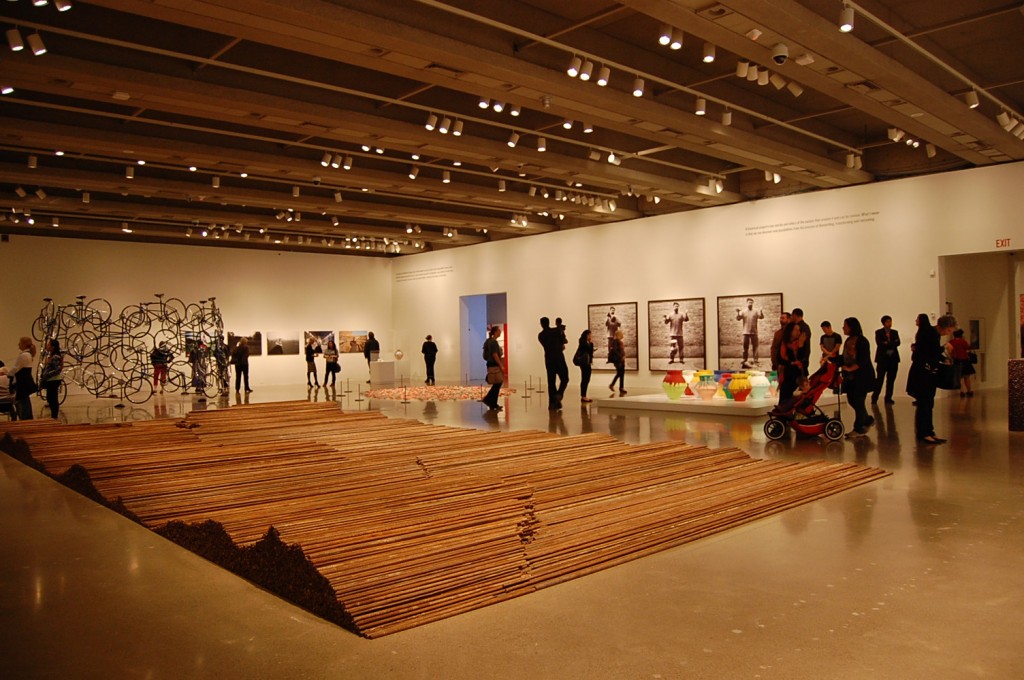
I thought I knew what I was getting myself into when I stepped inside the Ai Weiwei exhibit at the AGO, but nothing could’ve prepared me for the emotional roller coaster I experienced as I walked from room to room. For those unfamiliar with Ai Weiwei, he is a prolific contemporary artist who creates politically charged multimedia art that transcends boundaries and epitomizes freedom of expression. He’s also a Chinese dissident who is currently under 24-hour surveillance by the government, has been beaten to the point of brain hemorrhaging and is prohibited from leaving China. So – needless to say – the exhibition was overwhelmingly moving.
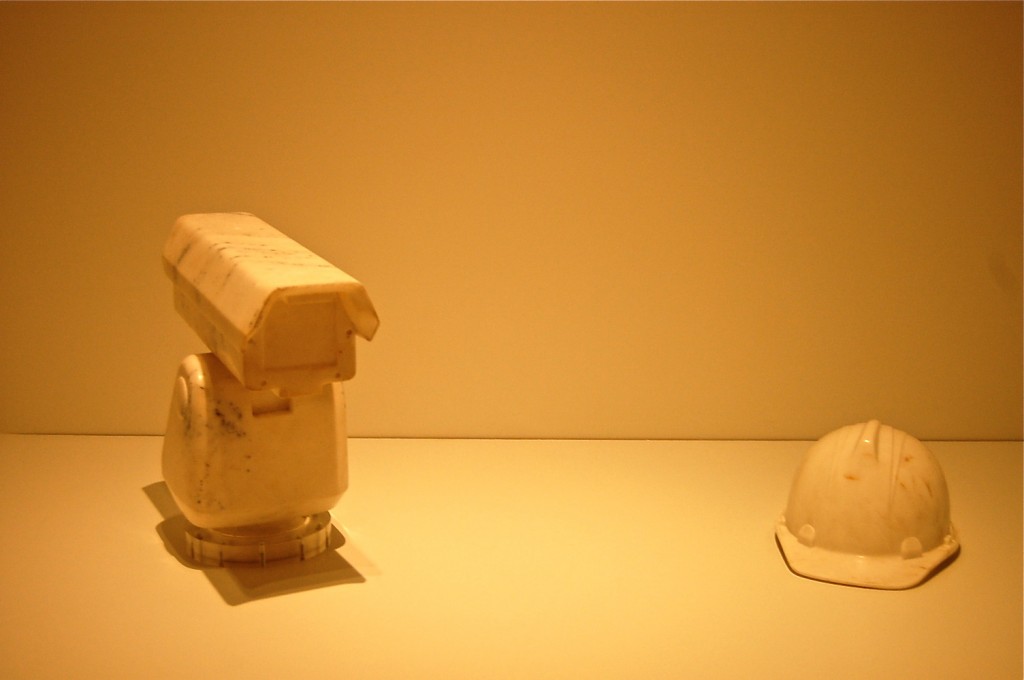
Surveillance Camera (2010) is a marble replica of the video cameras that now monitor Ai Weiwei’s house. Photo credit: Anna Ross Photography.
The serpentine sculpture that towers over the entrance of the exhibit sets the tone: made with 800 backpacks, it commemorates the more than 5 000 children who died when their schoolhouses collapsed during the 2008 Sichuan earthquake. Outraged by the Chinese government who refused to release the names or number of students that died, Ai Weiwei launched a “citizen investigation” to ensure they wouldn’t be forgotten…
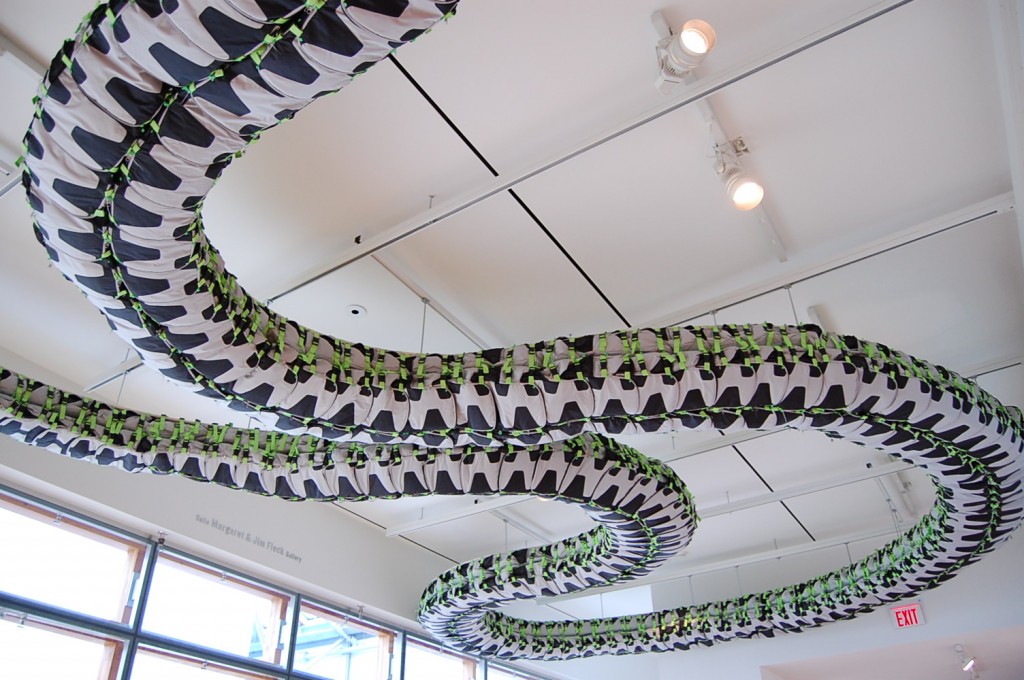
Snake Ceiling (2009)
At first, it was difficult to grasp the magnitude of the small exhibit. Ironically, I blame the hundreds of students running around and posing for Instagram pictures. Don’t get me wrong, some were drawing, reading and taking it all in, but the majority had no idea they were standing in the middle of a gut-wrenching exhibition.
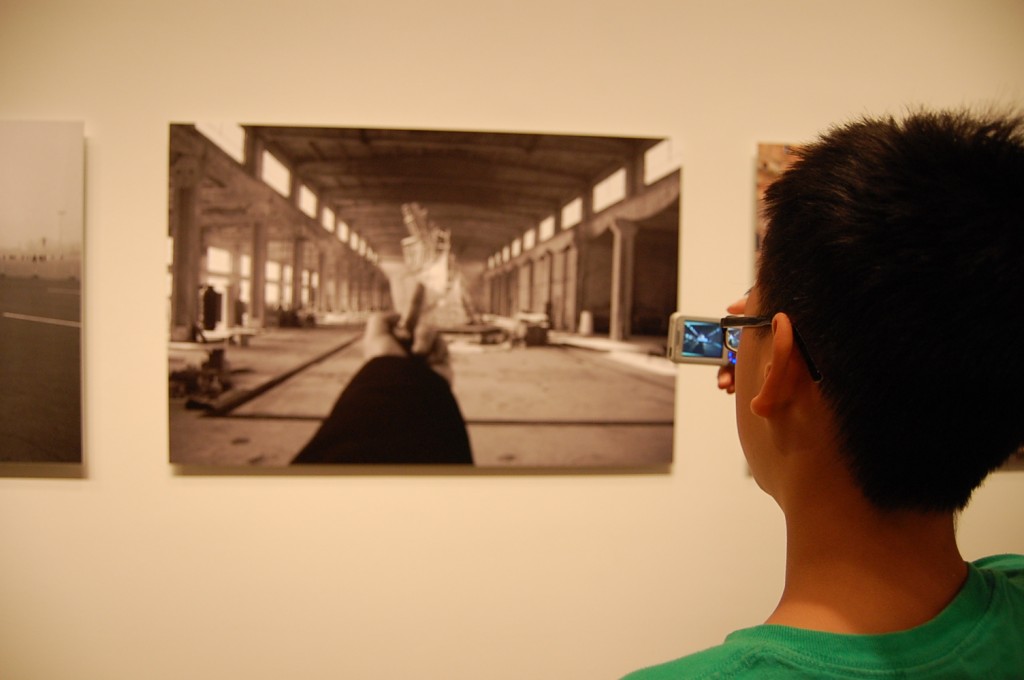
Study of Perspective (1995-2003). Photo credit: Anna Ross Photography.
After the room emptied, I sat in the corner nestled between a wall of names (of the children who died in the Sichuan earthquake) and a pile of rebar that Ai Weiwei had salvaged from their collapsed schoolhouses. As I heard the victims’ names announced individually over the speaker, I couldn’t help but feel as though I was at a mass grave…
“A name is the first and final marker of individual rights, one fixed part of the ever-changing human world. A name is the most basic characteristic of our human rights; no matter how poor or how rich, all living people have a name, and it is endowed with good wishes, the expectant blessings of kindness and virtue.” – Ai Weiwei
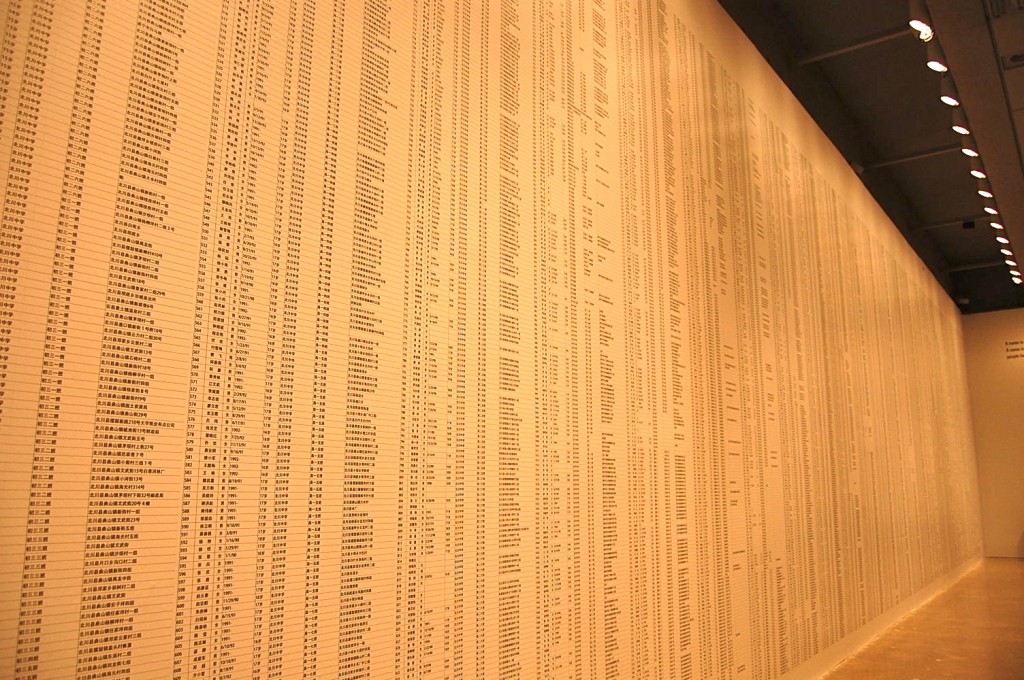
Names of the Student Earthquake Victims Found by the Citizens’ Investigation (2008-2011)
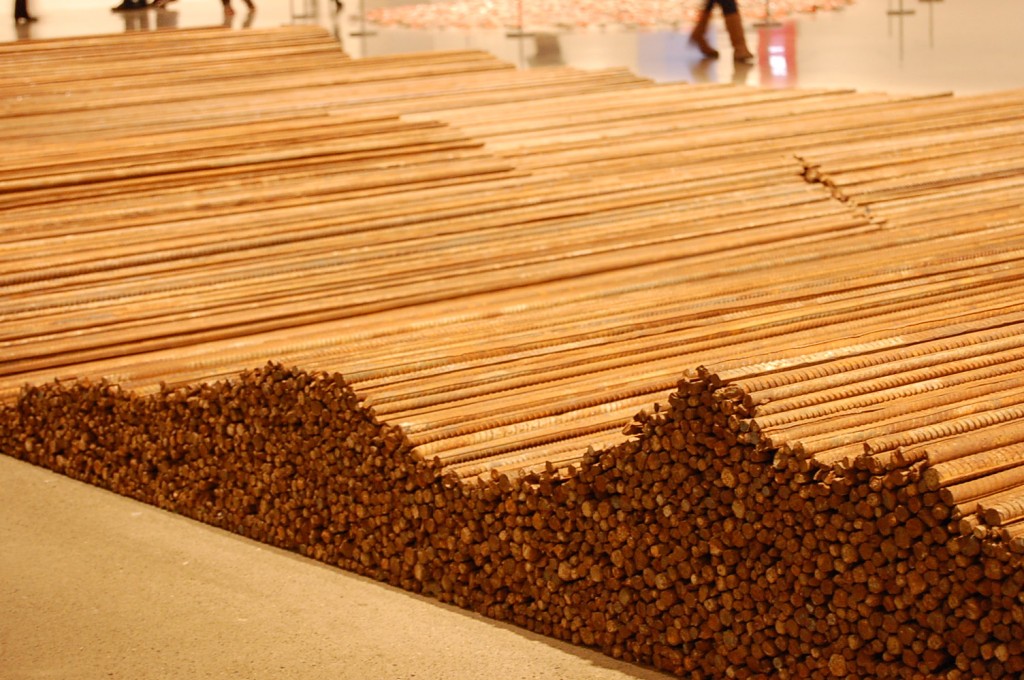
Straight (2008-2012)
Across the room, I spotted a series of photographs of Ai Weiwei dropping a Han Dynasty urn to the floor. I could hear people whispering around me: some thought it was a brilliant piece of art that challenges tradition, others were appalled that he could so easily destroy 2000 years of history. Whatever the viewpoints, his work definitely provokes conversation (as any good piece of art should).
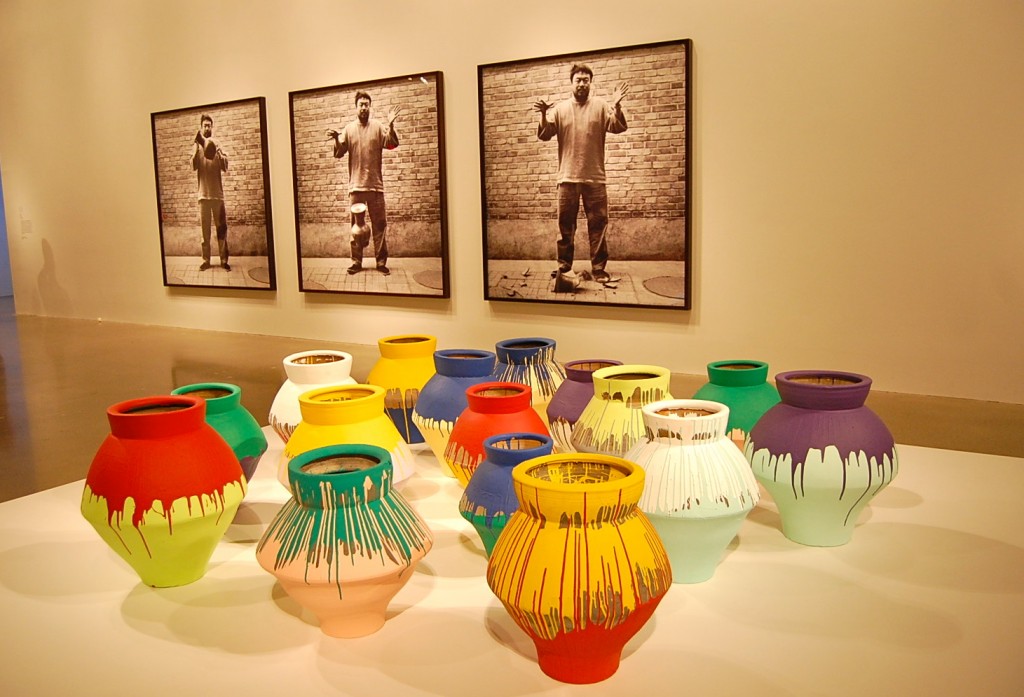
Foreground: Coloured Vases (2007-2010) indicate the past still exists below the surface, despite attempts to conceal it.
There were some enormous installations at the exhibit: from the 38-ton rebar piece to the one-ton tea houses that lined the side of one room. Made from Pu’er tea grown in southwest China, each tea house is meant to have imaginary tea rooms (the social centre of traditional Chinese culture).
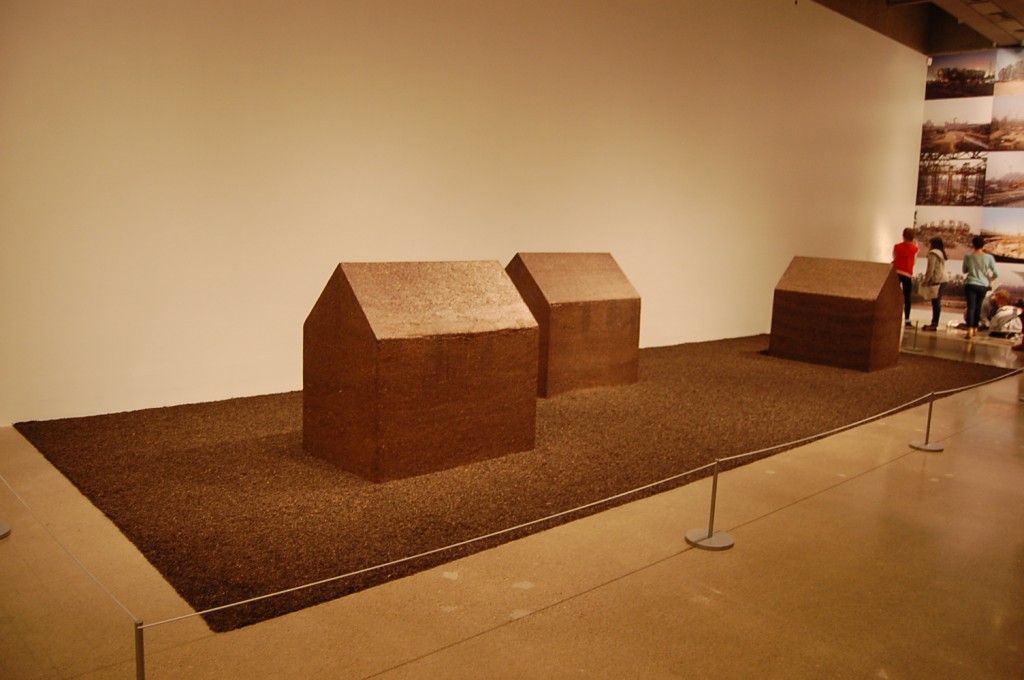
Teahouse (2011). Photo credit: Anna Ross Photography.
The three-meter high Moon Chests also command attention when you walk into the room. Made from huali (precious wood from the Chinese quince tree), Ai Weiwei has cut four circles in each that align to reveal every phase of the moon.
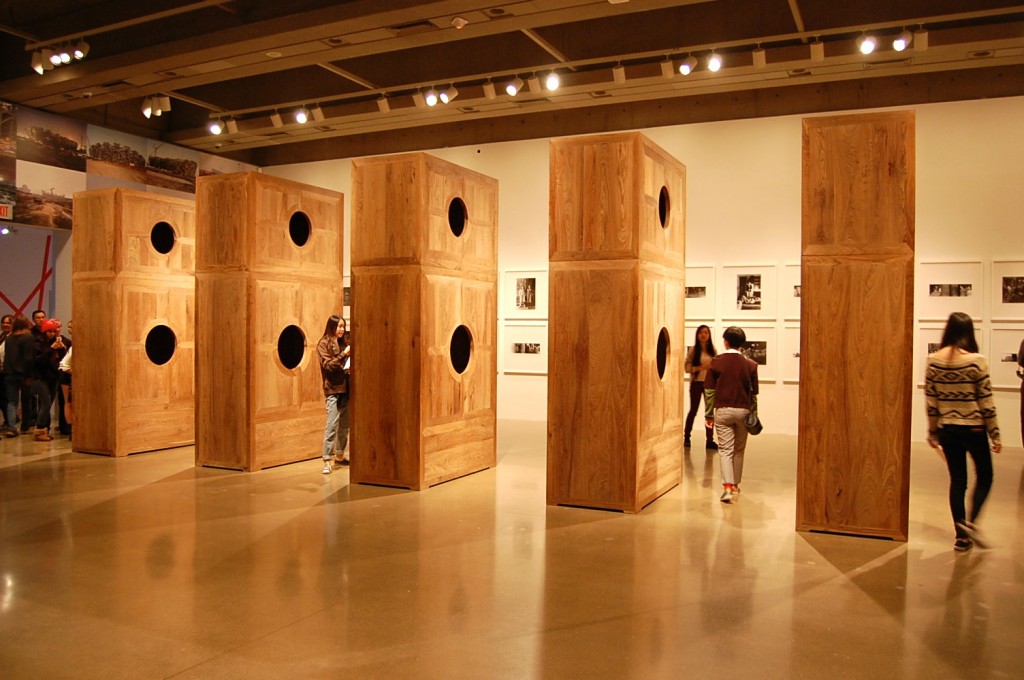
Moon Chest (2008). Photo credit: Anna Ross Photography.
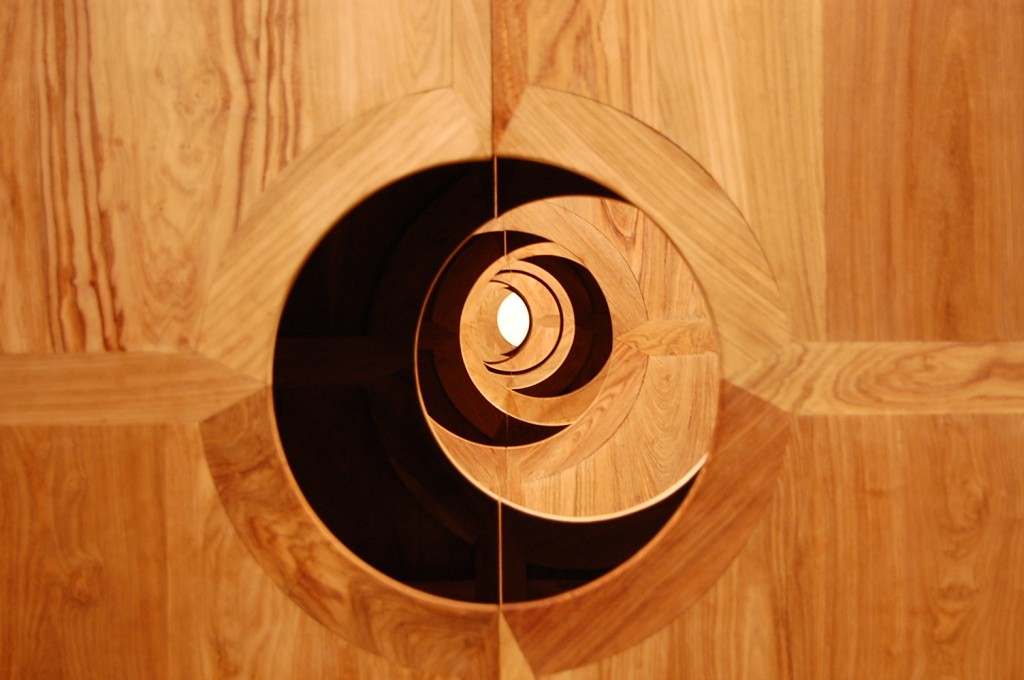
Moon Chest (2008)
Here are some other pieces that caught my eye:
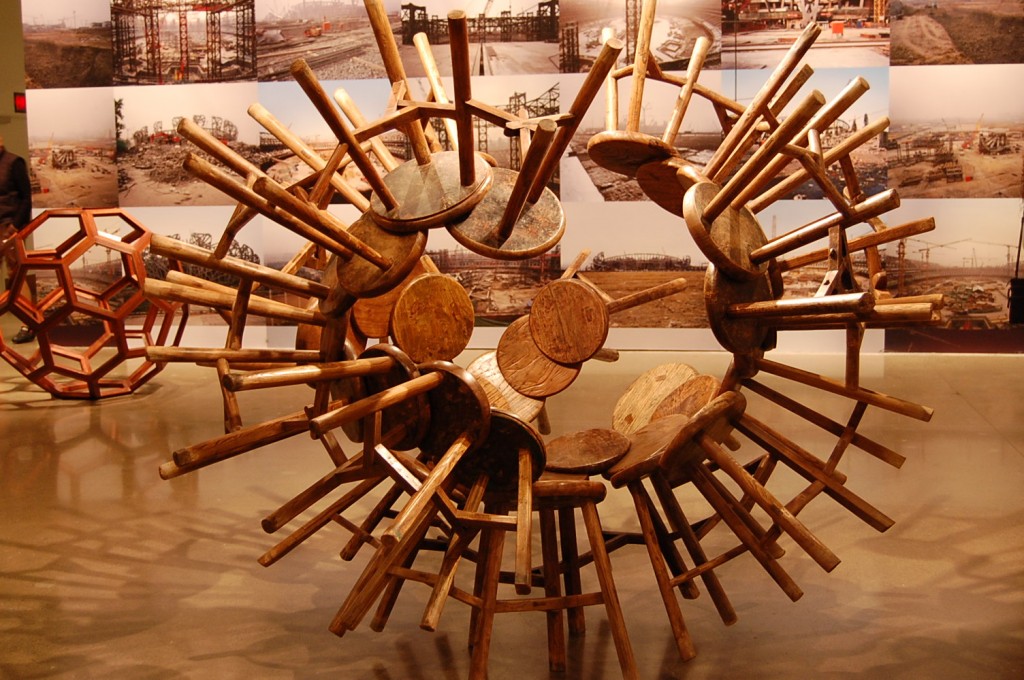
Grapes (2010)
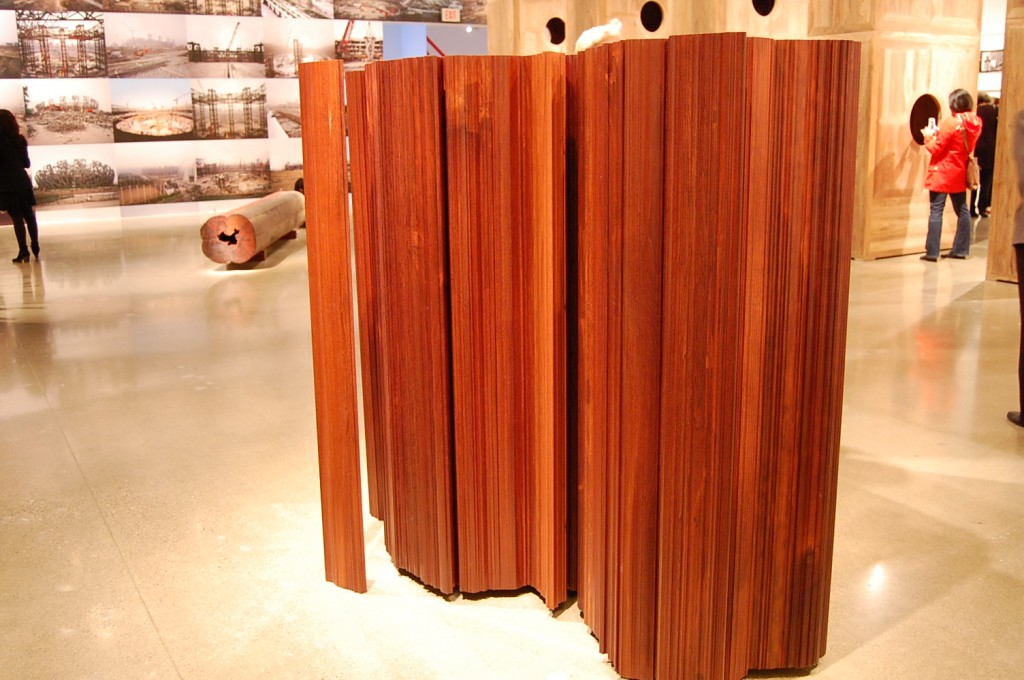
Map of China (2008)
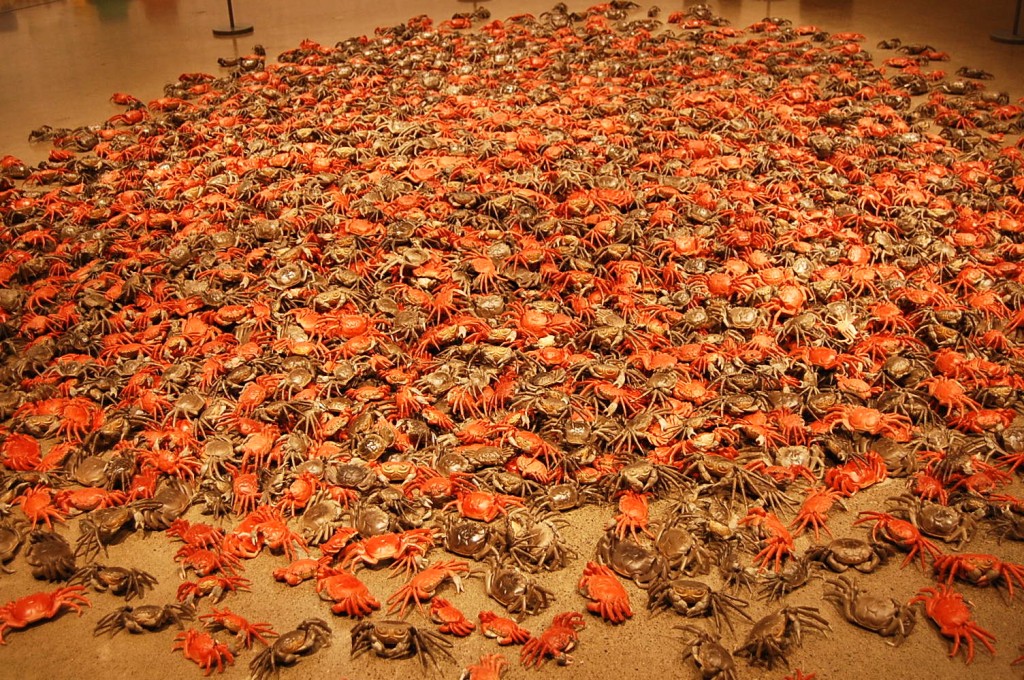
He Xie (2010). Thousands of hand-painted, porcelain river crabs.
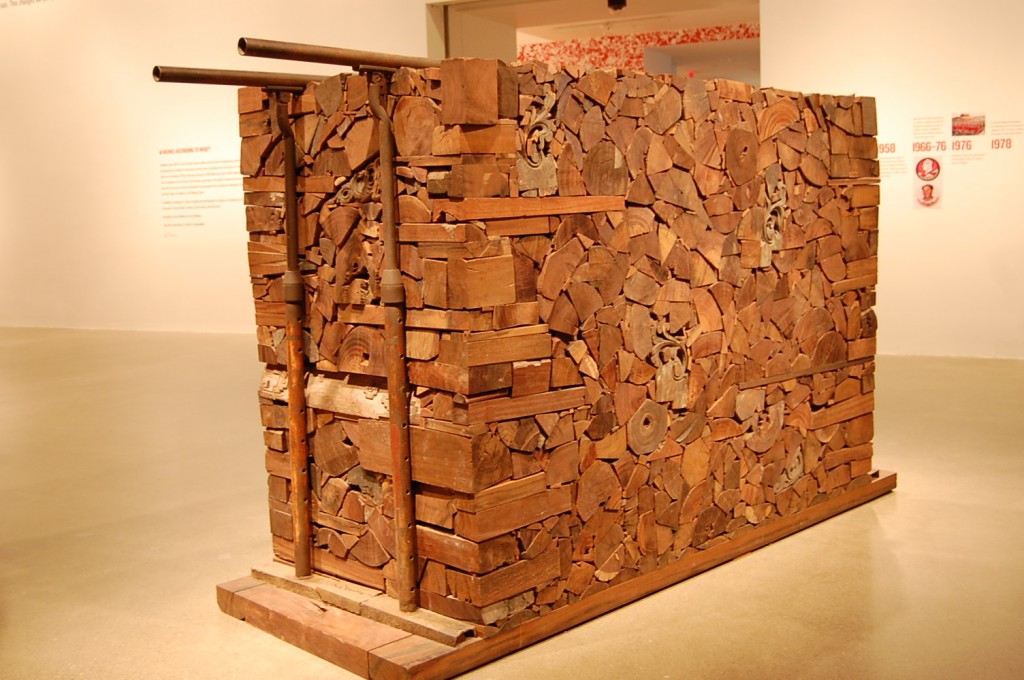
Kippe (2006). Gymnastic bars frame tightly fitted pieces of wood salvaged from Qing Dynasty temples.

Forever (2003)
This politically-charged, thought-provoking and poetic exhibit only runs until October 27th at the AGO. I highly recommend taking the time to explore it if you haven’t already. If the installations don’t move you, the carefully selected quotes that line the rooms will.

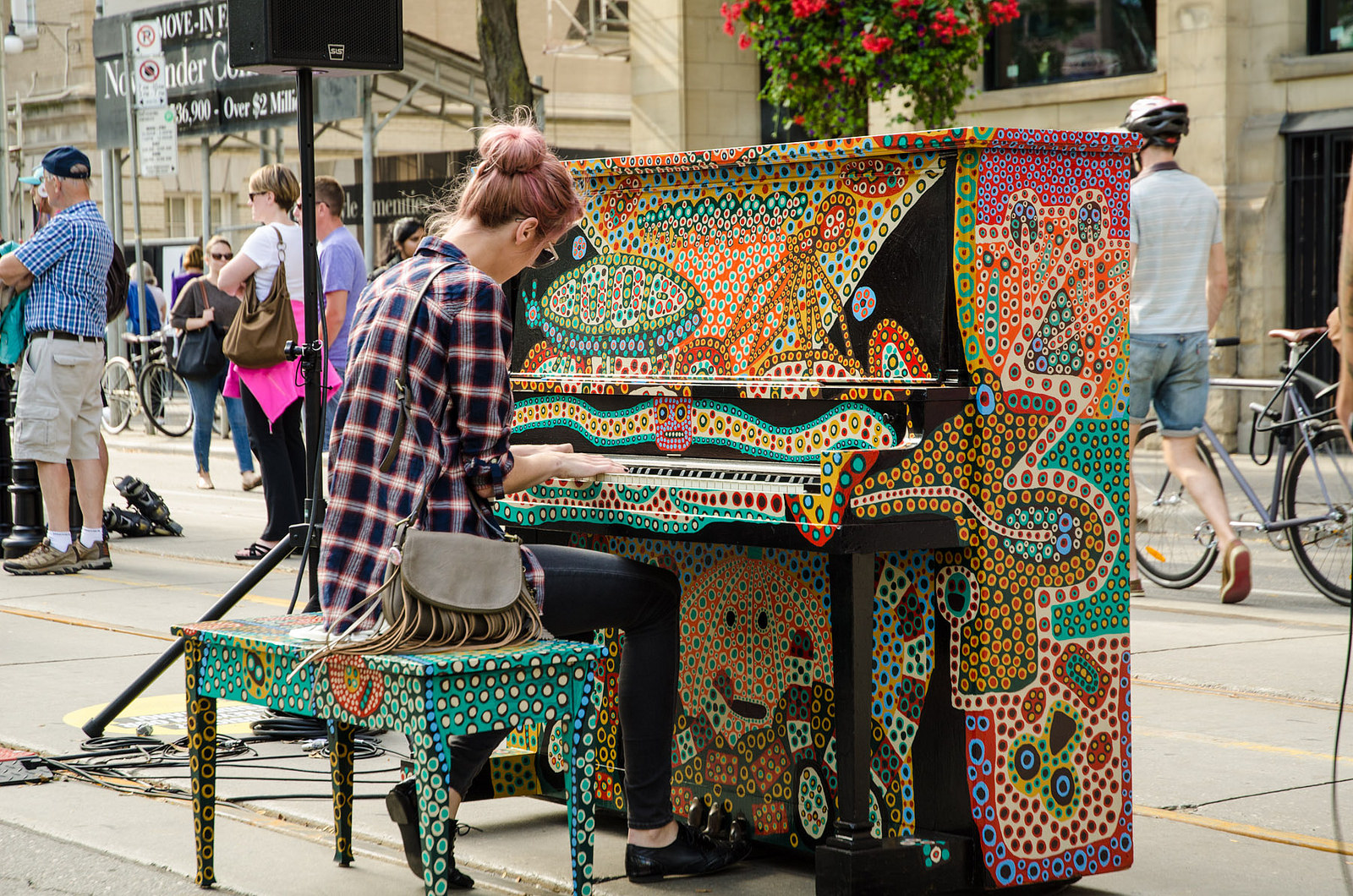

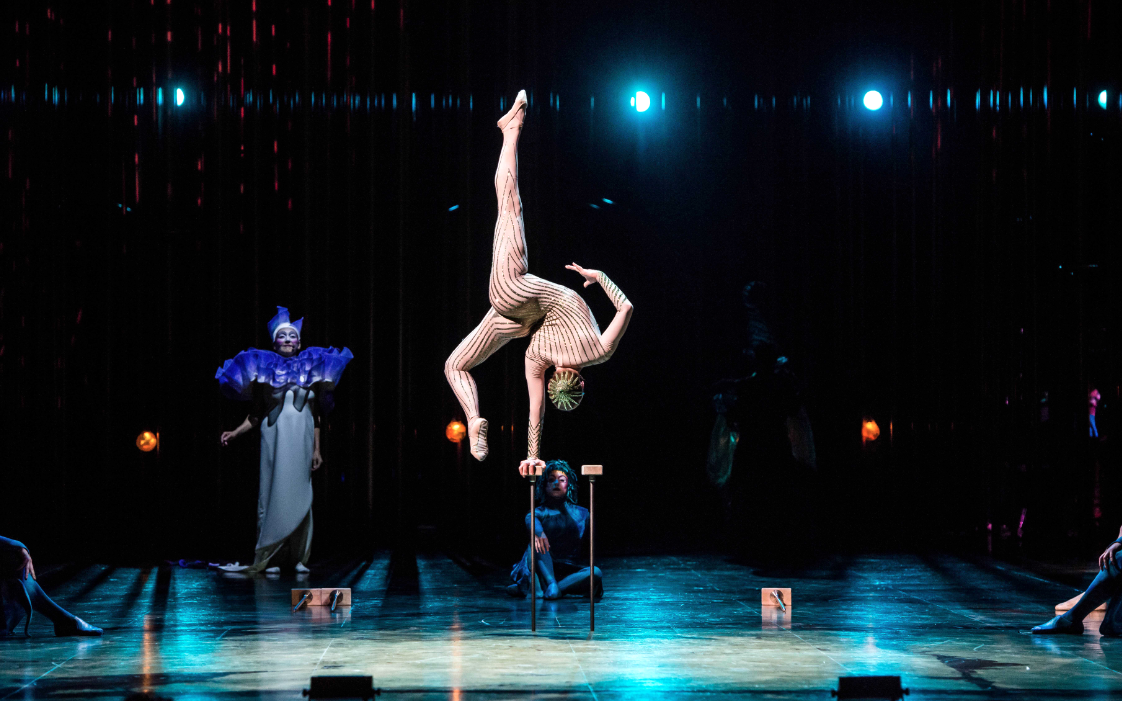


2 Comments
Island Canes..
April 18, 2014 at 8:11 pmSometimes we forget the place where all great art comes from. A place so deep, so real, so honest. The antethisis of most media today . Thanks for sharing. Not just the piece, but your heart.
admin
April 18, 2014 at 8:36 pmAnd thank YOU for such a beautiful comment. It was one of the most evoking exhibits I’ve walked through. Although small, I found it really powerful.